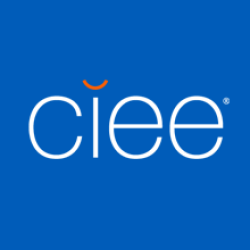Breaking Down Barriers to Language Learning
By Alexandra Wood
In the traditional study abroad model, students who have already acquired a high level of competency in a language typically study at a host institution during their third year of college in order to reach advanced proficiency. This model is ideal for students far along in their studies who want to go from functional to fluent, but it often rules out study abroad for students who have not yet been able to take many foreign language courses, perhaps because they are in the first years of their college education, or perhaps due to financial constraints and the rigorous course requirements of their major.
To make study abroad and language learning accessible to students from a broader range of academic backgrounds and majors, CIEE has created additional options with reduced or removed language study requirements. These options are not intended to replace our roster of traditional study abroad programs, rather to diversify our portfolio of options so we can open the door to international education for more students.
We’ve found that relaxing language requirements has not deterred students from opting to study language alongside content courses in English.
For example, students with little or no German can engage in our Open Campus model at our Global Institute in Berlin. There they can take courses with us in English in a range of subjects – including journalism, science, history, and business – while taking a German language course in German context. Despite it not being a program requirement by CIEE, Open Campus students continue to take language courses at a high rate.
CIEE Language Learning Courses
CIEE teaches 3,600 students language each year; with the highest enrollment in Spanish, Chinese, Arabic, and French language courses. But we also teach less common languages including Wolof in Senegal; and isiXhosa in South Africa.
Three-credit language courses are the most popular for both students studying abroad for a traditional semester (15+ weeks) and those enrolled in one or more of the Open Campus six-week academic blocks.
Improving Assessment
We are currently working on a project to establish a system to report on the progress of language learning across our student cohort. At present, we rely on in-class assignments, grades, and student course evaluations to indicate student progress and satisfaction with language learning. We are exploring technologies such as e-portfolios that will allow us to better measure student progress along the spectrum of language learning and allow students to more granularly track their second language skills development.
Research Partnership with the Center for Applied Linguistics
During 2016-2018, CIEE partnered with the Center for Applied Linguistics (CAL), based in Washington D.C., to investigate questions around language proficiency in the study abroad context. What proficiency level do college study abroad students demonstrate at the beginning vs the end of their program? What are the level gains across languages? What is the relationship between self-assessment and actual ratings?
To look at language acquisition during study abroad, students studying Arabic, French, German, Mandarin, Russian, Portuguese, and Spanish with CIEE completed an online test aligned with American Council on the Teaching of Foreign Languages (ACTFL) standards before and after their programs.
Consistent with prior research, the data demonstrated that students who reside in homestays make larger gains in language proficiency than those in other accommodations.
The data also showed that a student’s major does not determine their level of language learning – students who major in language and/or area studies experience similar language proficiency gains as students majoring in other fields. This is true for both short-term programs and traditional semester programs.
Our research partnership with CAL has now shifted to our High School Study Abroad program, where we are using the Standards-based Measurement of Proficiency (STAMP) test to measure language acquisition for the nearly 1,000 students studying French, Spanish, Italian, German, Mandarin Chinese, Japanese, and Arabic in 18 CIEE locations with us each summer. Given the lack of research on language acquisition among high school study abroad students, we are excited to see the outcomes of this ambitious project, and to share our findings with the international education community.

